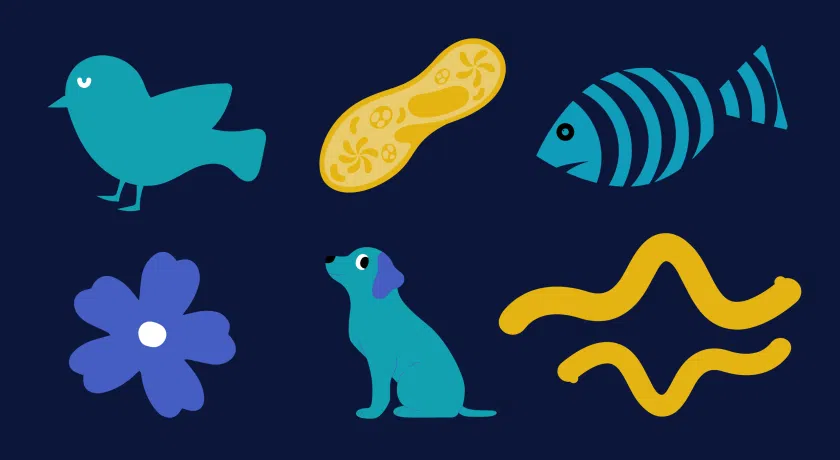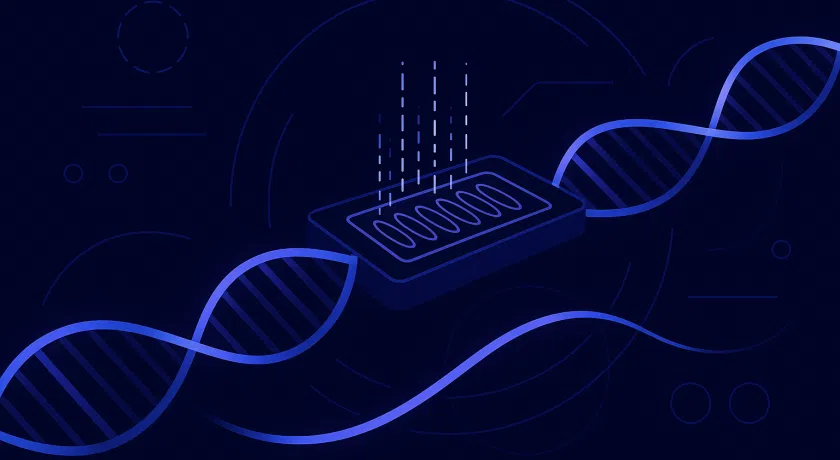
This blog evaluates the demand for AAV gene therapy optimization and Single Cell Discoveries’ response: single-cell biodistribution and transgene expression assay for AAV drug developers.
In the rapidly evolving landscape of modern medicine, gene therapy has emerged as a beacon of hope for those battling a wide range of diseases. Its promise lies in targeting and correcting the genetic aberrations responsible for various disorders, potentially providing long-lasting or even curative solutions.
Currently, fifteen in vivo human gene therapy products are EMA or FDA-approved for treatment in the EU and US. In addition, more than 100 novel products are in clinical trials. And over 500 candidates are in the preclinical stage. The success or failure of these new products significantly depends on optimizing the gene delivery method. Hence, researchers are putting great effort into biodistribution studies.
Single-cell sequencing has opened up remarkable possibilities in this field. Particularly, it has enhanced the resolution of measuring gene delivery specificity and on-target efficacy, which is crucial for establishing safe treatments. What’s more, it can measure downstream gene expression changes in single transduced cells. This enables a deeper characterization of successfully targeted cells and therapy effects.
This blog explains the benefits of the recent adoption of single-cell sequencing in biodistribution studies. As our main focus, we take the most used gene delivery method, adeno-associated virus (AAV) vectors.
Jump forward to a specific section:
- Key concepts
- Biodistribution challenges of AAV gene therapy
- How to employ single-cell sequencing
- More information
Want to learn more about our single-cell biodistribution and transgene expression assay for AAV drug developers? Download our application note titled “How single-cell sequencing can optimize gene therapy biodistribution studies”
Key ideas of AAV gene therapy
Gene therapy aims to treat disease by targeting disease-causing genes. Often, the aim of gene therapy is to replace a defective gene with a working copy. The final goal is to replace a dysfunctional protein with a functioning copy. While ex vivo gene therapy works by editing cells taken out of the body, in vivo gene therapy aims to edit inside the cells. This requires a carefully optimized drug distribution method.
Biodistribution considers the pattern of distribution and localization of therapeutic genes or gene delivery vectors throughout the body. It determines which tissues or organs the vectors reach (vector tropism) and at what concentrations. Biodistribution studies provide critical insights into gene therapies’ safety, transduction efficacy, and targeting accuracy.
Marked per (pre)clinical phase, the 500+ AAV gene therapy programs under development in August 2023.
Delivery is possible with many types of vehicles, such as nanoparticles, lentiviral vectors, and herpes simplex viral vectors. However, most gene therapy platforms use recombinant adeno-associated virus (AAV) vectors as a delivery vehicle. In short, they are preferred for the following traits:
- Their relatively low risk of integration into human DNA
- the stable expression of the delivered gene
- The relatively broad tropism (i.e., their capacity to transduce many cell types)
Again, for a more comprehensive story, you can read our biodistribution application note.
Yet, AAV-borne gene therapy platforms are not without challenges.
Biodistribution challenges of AAV gene therapy
A significant current challenge in gene therapy is the specificity needed for gene delivery methods. Off-target gene therapy delivery can lead to unintended edits in non-target cells, causing unwanted side effects. Additionally, reduced specificity necessitates higher dosages to achieve the desired effect in the target cells, elevating the treatment’s risk, which may only become apparent during clinical trials. Therefore, methods that precisely assess AAV specificity are highly sought after.
Commonly, researchers use immunohistochemistry and in situ hybridization techniques to analyze transfection levels. However, these approaches have downsides. They explore a limited number of AAVs simultaneously, often only one or two, and rely on known marker genes to identify cell types. This prevents an unbiased study of tropism and precludes the accurate detection of hard-to-detect cell types.
Most prominent AAV-based gene therapy platforms approved for the market.
Single-cell sequencing for AAV gene therapy
Single Cell Discoveries collaborates with leading pharmaceutical companies to apply single-cell technologies to enhance gene therapy biodistribution studies. In particular, our Research & Development department has been investigating ways single-cell transgene detection can aid the design of AAV-based gene therapies.
Sabine Tanis, PhD, Team Lead Method Development, explains: “We are combining single-cell whole-transcriptome sequencing and AAV detection to provide vital information about specificity, tropism, and safety of delivery methods.”
The current protocols allow measuring the transcriptome parallel to the AAV-generated transcripts at single-cell resolution. This reveals:
- Transduction efficiency, i.e., which vector is detected at the highest level.
- Cell-type specific biodistribution of AAV expression enabled by cell-type annotation based on the transcriptome data. It is possible to test multiple AAV variants or AAV serotypes simultaneously.
- Gene expression changes in the host cells that express the AAV transcript, showing the effects of the transgene on the cellular state.
AAV measurements at single-cell resolution: (top left) Cell clustering analysis of transfected organoids. (bottom left) Simultaneous AAV transcript detection identifies successfully transfected cells. (C) Matched results measure viral tropism and quantify transfection efficiency
“What excites me the most is the multimodal readout,” Sabine Tanis says. “The gene expression profile enables accurate cell typing. By projecting AAV detection on this, we can characterize AAV tropism at cell type resolution.” This increases the resolution of specificity measurements for gene therapy vectors from tissue level to cell type level, an important step up.
“Then, the single-cell gene expression profiles also enable a deeper look at the AAV transcript effects on the cells’ gene expression,” she continues. “So the technique suits the AAV development workflow immediately, but can also deliver novel biological insights in the long run.”
More information
You can find more information on how single-cell sequencing can benefit AAV vector optimization and AAV capsid design in our application note titled “How single-cell sequencing can optimize gene therapy biodistribution studies.” This resource provides a comprehensive exploration of the current thinking on single-cell applications for improved vector genome design, target specificity, and overall therapeutic efficacy in gene therapy applications.
AAV element header photo: Jazzlw (CC BY-SA 4.0)





